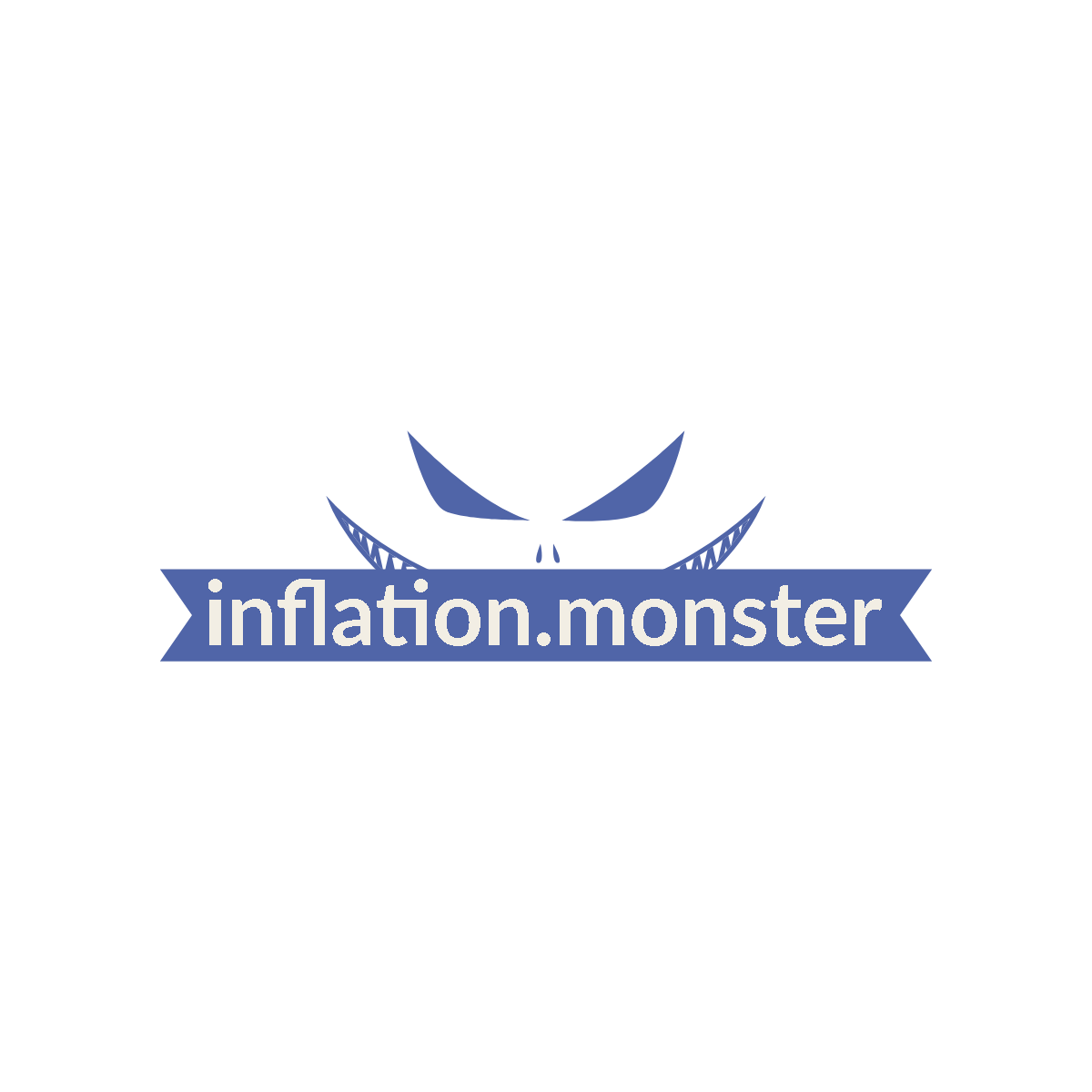Picture this: you’re standing in a bustling market, holding a crisp, new banknote in your hand. It’s worth a significant amount today, allowing you to purchase goods and services with ease. But what if, one day, that same banknote becomes utterly worthless? A mere piece of paper that holds no value. This is what happens in a phenomenon known as hyperinflation, where money loses its worth at an alarming rate. In this article, we will explore the intricacies of hyperinflation and its impact on economies around the world. So, buckle up and get ready to uncover the mysteries behind this economic monster called inflation.

Causes of Hyperinflation
Hyperinflation is a phenomenon that occurs when a country experiences rapid and excessive price increases, resulting in the severe devaluation of its currency. There are several underlying causes that can contribute to hyperinflation, and understanding them is crucial in order to prevent and manage this economic crisis.
Government Printing Money
One major cause of hyperinflation is the excessive printing of money by the government. When a government prints more money than the economy can absorb, the supply of money surges, leading to an imbalance between the amount of money available and the goods and services produced. As a result, prices skyrocket, and the currency loses its value.
Excessive Government Spending
Another contributing factor to hyperinflation is excessive government spending. When a government spends beyond its means, it creates a budget deficit and must borrow money or print more currency to finance its activities. This injection of additional money into the economy can lead to an increase in demand without a corresponding increase in production, ultimately driving up prices and causing hyperinflation.
Massive Debt and Deficit
Countries burdened with massive debts and deficits are more susceptible to hyperinflation. When a government relies heavily on borrowing to finance its operations and accumulates large amounts of debt, it becomes increasingly difficult to repay these debts. In an attempt to manage the debt, the government may resort to printing more money, exacerbating the inflationary pressures and potentially leading to hyperinflation.
Political Instability
Political instability can also contribute to hyperinflation. When a country undergoes substantial political upheaval, such as a revolution or civil unrest, economic stability is often compromised. Governments may lose control over fiscal and monetary policies, leading to irresponsible decision-making and uncontrolled money supply. This lack of stability can further drive hyperinflationary pressures, undermining the economy and causing significant hardships for its citizens.
Historical Examples of Hyperinflation
Throughout history, there have been notable instances of hyperinflation that serve as cautionary tales and provide valuable lessons for understanding the devastating impacts of this economic crisis. Let’s take a look at some well-known cases:
Weimar Germany (1921-1924)
Perhaps one of the most notorious examples of hyperinflation occurred in Weimar Germany during the early 1920s. As a result of the economic hardships caused by World War I and the repayment of war reparations, the German government resorted to printing money to meet its financial obligations. This led to astronomical price increases, with people needing wheelbarrows full of cash to purchase everyday items.
Zimbabwe (2006-2009)
Another example of hyperinflation can be found in Zimbabwe in the late 2000s. The government, under President Robert Mugabe’s regime, implemented policies that eroded the confidence in the country’s currency. Impacted by political instability, corruption, and excessive money printing, Zimbabwe experienced hyperinflation rates reaching astronomical levels, with prices doubling almost daily.
Venezuela (2016-present)
Venezuela, once a prosperous oil-rich nation, is currently undergoing a severe hyperinflationary crisis. Mismanagement of the economy, excessive government spending, and political instability have all contributed to the skyrocketing inflation rates. The Venezuelan bolívar has become practically worthless, leaving its citizens struggling to afford even basic necessities.
Yugoslavia (1992-1994)
During the breakup of Yugoslavia in the early 1990s, hyperinflation ravaged the economy, severely impacting the lives of its citizens. As the country disintegrated into individual states, the Yugoslav dinar rapidly lost its value. Inflation rates skyrocketed, leading to economic chaos and social unrest.
These historical examples highlight the catastrophic consequences that hyperinflation can have on the economy, society, and the livelihoods of individuals.

Effects of Hyperinflation
Hyperinflation wreaks havoc on an economy and society, causing a range of devastating effects that can be felt by everyone, from ordinary citizens to businesses and the government. Let’s explore some of the key effects:
Loss of Purchasing Power
During hyperinflation, the purchasing power of money rapidly diminishes. Prices skyrocket, making it increasingly challenging for individuals to afford even basic necessities. This loss of purchasing power erodes the standard of living, leaving people struggling to meet their basic needs.
Economic Instability
Hyperinflation creates a highly unstable economic environment. Rapid price increases make it difficult for businesses to set prices, plan production, and make accurate financial forecasts. Investors become hesitant to invest in the economy, and capital flight may occur as people seek more stable financial environments.
Wealth Redistribution
Hyperinflation often leads to a significant redistribution of wealth, typically favoring those who are able to protect their assets from the devaluation of the currency. Individuals with access to foreign currency or hard assets, such as real estate or commodities, may be better positioned to preserve their wealth. Meanwhile, those who lack these resources may suffer the most, with their savings and investments rapidly losing value.
Social Unrest
The social consequences of hyperinflation can be severe. As people struggle to afford basic necessities and their livelihoods are undermined, social unrest can escalate. Protests, strikes, and civil unrest become more prevalent as frustration with the deteriorating economic conditions grows. This can further destabilize the country and exacerbate the challenges faced by the government in managing the crisis.
Hyperinflation and Currency Value
Hyperinflation has a profound impact on the value of a country’s currency. As the inflation rates soar and confidence in the currency plummets, several key dynamics come into play.
Devaluation of Currency
Hyperinflation leads to a sharp and rapid devaluation of the currency. As the money supply surges and demand for goods and services outstrips supply, the currency loses its purchasing power. This loss of value erodes the confidence in the currency, causing it to depreciate significantly in relation to foreign currencies.
Loss of Trust in Currency
The erosion of trust in a currency is a hallmark of hyperinflation. As the inflation rates accelerate and people witness the rapid loss of their purchasing power, confidence in the currency dwindles. This loss of trust often leads to a shift in preferences towards alternative forms of money, such as foreign currencies or hard assets, further exacerbating the hyperinflationary pressures.
Demand for Foreign Currency
As a result of hyperinflation, the demand for foreign currencies typically surges. When people lose faith in their domestic currency, they seek alternatives that are more stable and reliable. Foreign currencies, especially those from countries with stable economies, become a sought-after means of preserving value and conducting transactions.

Hyperinflation and Savings
Hyperinflation poses significant risks to individuals’ savings, as the value of money rapidly erodes. The consequences can be financially devastating, particularly for those who have worked hard to accumulate savings over their lifetime.
Erosion of Savings
One of the most profound effects of hyperinflation is the erosion of savings. As prices escalate rapidly, the purchasing power of savings diminishes, eroding the value of accumulated wealth. This can have long-term consequences for individuals, particularly for retirees who rely on their savings for their livelihood.
Risk of Bankruptcy
Hyperinflation can also increase the risk of bankruptcy, both for individuals and businesses. As the value of money plummets, the ability to meet financial obligations and repay debts becomes increasingly challenging. Individuals and businesses may find themselves unable to service their debts, leading to insolvency and potential bankruptcy.
Shift to Hard Assets
In response to hyperinflation, individuals often seek to protect their savings by shifting to hard assets that are less susceptible to the eroding value of money. Investments in real estate, precious metals, and commodities can provide a hedge against inflation and preserve value during times of hyperinflation. These hard assets tend to be more stable and retain their value better than a rapidly depreciating currency.
Hyperinflation and Investments
Hyperinflation has significant implications for investments, as financial markets become highly volatile and traditional investment strategies may no longer be viable. It is crucial for investors to understand how hyperinflation impacts different investment avenues.
Stock Market Volatility
During periods of hyperinflation, the stock market often experiences extreme levels of volatility. Rapid price fluctuations and uncertainty make it difficult to accurately assess the value of stocks. Furthermore, inflation erodes the purchasing power of dividends, impacting the attractiveness of stocks as an investment.
Commodity and Real Estate Investments
Inflationary pressures can have a positive impact on some types of investments, particularly commodities and real estate. As the value of money declines, the price of commodities such as gold, silver, and oil often rises. Real estate investments can also serve as a hedge against hyperinflation, as property prices tend to increase during periods of high inflation.
Importance of Diversification
Hyperinflation highlights the importance of diversifying investments to mitigate the risks associated with a single asset or currency. By spreading investments across different asset classes, regions, and currencies, investors can minimize the impact of hyperinflation on their overall portfolio. Diversification helps protect wealth and preserve value by reducing exposure to individual assets or currencies that may suffer significant depreciation.
Hyperinflation and Business Operations
Hyperinflation poses significant challenges for businesses, disrupting their operations and making it difficult to plan and make informed financial decisions. Understanding the impact of hyperinflation on business operations is crucial for organizations to navigate this economic crisis.
Impact on Pricing and Costs
Hyperinflation significantly impacts pricing and costs for businesses. Rapid price increases for raw materials, labor, and other inputs make it difficult to accurately calculate costs and set prices. Frequent adjustments to pricing become necessary to keep pace with inflation, making financial planning and budgeting increasingly complex.
Difficulties in Financial Planning
Hyperinflation creates immense difficulties in financial planning for businesses. The rapid erosion of the value of money makes it challenging to accurately forecast revenue, expenses, and profits. The uncertainty in the financial landscape poses challenges for long-term planning, making it challenging for businesses to make informed investment decisions and execute strategic initiatives.
Uncertainty in Revenue and Profit
Hyperinflation introduces significant uncertainty into the revenue and profit calculations for businesses. Fluctuations in demand, changing consumer behavior, and the unpredictability of inflation rates make it challenging to estimate revenue accurately. This uncertainty can be particularly damaging for businesses that rely on long-term contracts or sales agreements, as the terms may no longer align with the current economic conditions.
Measures to Combat Hyperinflation
Governments and central banks employ various measures to combat hyperinflation and restore economic stability. While each situation is unique, there are several common strategies that have proven effective in managing hyperinflationary crises.
Monetary Policy Tightening
One of the primary measures to combat hyperinflation is tight monetary policy. Governments and central banks can increase interest rates to reduce the money supply and slow down inflationary pressures. By restricting the amount of money in circulation, the government aims to stabilize prices and restore confidence in the currency.
Currency Stabilization
Another strategy to combat hyperinflation is currency stabilization. Governments may choose to peg their currency to a stable foreign currency or adopt a new currency altogether. This can help restore confidence in the currency and create a more stable economic environment, encouraging investment and economic growth.
Structural Reforms
Structural reforms are vital to address the underlying causes of hyperinflation. Governments need to address fiscal imbalances, reduce excessive government spending, implement prudent fiscal policies, and promote economic stability. Strengthening the rule of law, promoting transparency, and combating corruption are also critical in restoring economic stability.
International Assistance
In severe cases of hyperinflation, countries may require international assistance to stabilize their economies. International organizations, such as the International Monetary Fund (IMF), can provide financial aid, technical expertise, and policy guidance to help countries implement effective measures to combat hyperinflation and restore economic stability.
Lessons Learned from Hyperinflation
Hyperinflation serves as a stark reminder of the importance of sound monetary and fiscal policies. Countries that have successfully overcome hyperinflation have valuable lessons to offer in terms of preventing and managing this economic crisis.
Sound Monetary and Fiscal Policies
Maintaining sound monetary and fiscal policies is crucial to prevent hyperinflation. Governments must exercise fiscal discipline, avoid excessive borrowing and spending, and promote responsible monetary policies. Sound economic management and prudence can help prevent the conditions that give rise to hyperinflation.
Importance of Central Bank Independence
Central bank independence is vital in combating hyperinflation. Governments must respect the autonomy of central banks and avoid exerting political influence on monetary policy decisions. Central banks with independence are better equipped to make objective and informed decisions to maintain price stability and prevent hyperinflation.
Early Warning Systems
Establishing effective early warning systems can help countries detect and respond to inflationary pressures before they escalate into hyperinflation. Monitoring economic indicators, inflation rates, fiscal deficits, and money supply growth can provide valuable insights to policymakers, enabling them to take corrective actions in a timely manner.
Conclusion
Hyperinflation is a severe economic crisis that can have devastating consequences for individuals, businesses, and nations. Understanding its causes, historical examples, effects, and implications is crucial in preventing and managing this destructive phenomenon. By implementing sound monetary and fiscal policies, promoting central bank independence, and engaging in early detection and preventive measures, countries can mitigate the risks of hyperinflation and maintain economic stability. Hyperinflation may be a historical occurrence, but its lessons are evergreen in navigating the complex realm of inflation and preserving the value of money.




